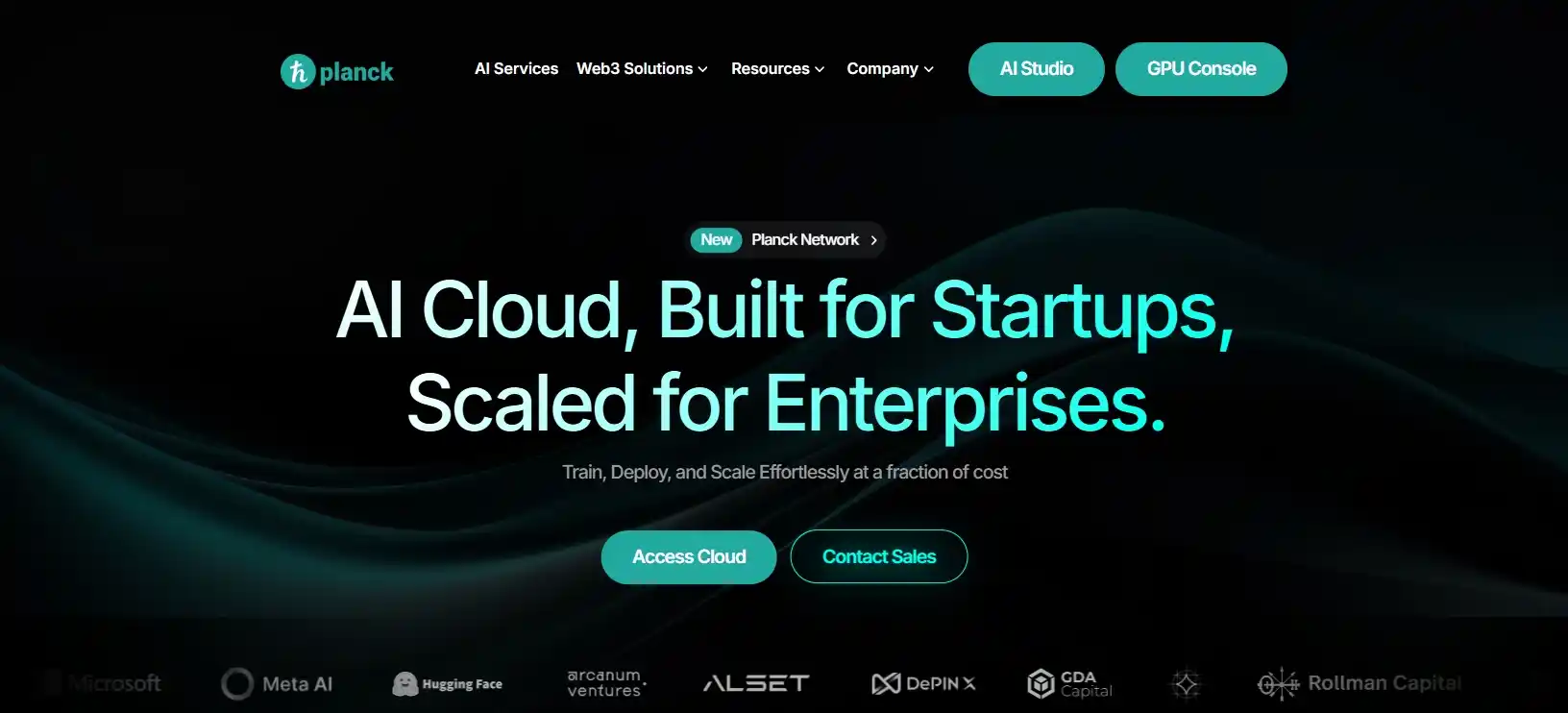In recent years, artificial intelligence (AI) has been rapidly evolving, yet access to powerful computational resources remains limited due to high costs and centralized platforms. Planck Network offers a solution to this problem by providing a decentralized platform for the creation, training, and deployment of AI models. Combining blockchain and cloud technologies, the project ensures the accessibility, security, and scalability of AI computations.
Contents:
- Overview of Planck Network Project
- Key Components of the Platform
- Advantages of the Decentralized Approach
- Economy of the $PLANCK Token
- Partnerships and Investments in Planck Network
- Conclusion
Overview of Planck Network Project
Planck Network is a decentralized platform for AI computations based on a modular L1 blockchain network. The project aims to reduce costs and simplify access to powerful computational resources for developers, startups, and enterprises. The platform allows users to rent or provide computational power using GPUs, and integrates AI data processing capabilities in real time.
Key Components of the Platform
The Planck Network platform consists of several key components that ensure its functionality and efficiency in the field of decentralized AI computations. Each of these components plays a vital role in providing accessibility, performance, and security of services.
1. AI Studio
AI Studio is a cloud environment for developing and deploying AI models. It provides tools for training, configuring, and inference of models, supporting popular frameworks and libraries. The platform is optimized for working with large language models (LLMs) and other AI applications. AI Studio allows developers and researchers to create and test AI models in a convenient and scalable environment.
2. GPU Console
GPU Console allows users to rent computational power based on GPUs to perform AI computations. The platform supports various GPU models and offers flexible rental terms, ensuring significant savings compared to traditional cloud services. Users can provide their GPUs for rent and earn rewards for using their computational power.
3. L1 AI Chain
L1 AI Chain is a modular blockchain network designed to support decentralized AI computations. It ensures security, transparency, and scalability of operations related to renting computational power and performing AI tasks. The platform uses Proof-of-Stake (PoS) and Proof-of-Computing (PoC) mechanisms to ensure consensus and reward network participants. L1 AI Chain integrates with Ethereum Virtual Machine (EVM), ensuring compatibility with existing decentralized applications and smart contracts.
These components together form the core of the Planck Network ecosystem, providing developers, researchers, and enterprises with powerful tools to create and deploy AI applications in a decentralized and cost-effective environment.
Advantages of the Decentralized Approach
The decentralized approach implemented in Planck Network provides users and developers with unique opportunities for efficient and accessible use of computational power. The combination of blockchain technologies and distributed computing helps overcome the limitations of traditional cloud platforms.
Key advantages of the decentralized model:
- Accessibility for a wide audience: The platform allows users with different levels of resources to participate in AI computations, providing the ability to monetize computational power even from mobile devices.
- Cost reduction: Using decentralized computational power reduces the cost of AI processing, offering competitive prices compared to traditional cloud services.
- Scalability and flexibility: The flexible architecture of the platform makes it easy to scale AI applications, adapting resources to current needs.
- Enhanced security and transparency: Integration with blockchain ensures data protection and transparency of operations, reducing the risks of data leaks and unauthorized access.
- Encouraging innovation: The open and decentralized ecosystem fosters the development of new AI applications and models, supporting diversity and creativity.
These advantages make Planck Network an attractive choice for developers, startups, and enterprises seeking efficient and affordable use of AI computations. The platform opens new horizons for creating and deploying AI applications in a decentralized and secure environment.
Economy of the $PLANCK Token
The $PLANCK token is the foundation of the economic model of the Planck Network platform, providing incentives for ecosystem participants and supporting the decentralized nature of computational processes. The collaboration with Arcanum Ventures led to the development of a new tokenomics model focused on effective resource and reward distribution.
Structure of the $PLANCK token distribution:
| Category | Percentage of Total Supply | Description |
|---|---|---|
| Team (team and advisors) | 20% | Rewards for contributions to the project's development. |
| Technological Infrastructure | 25% | Funding for platform development and support. |
| Public Sale | 15% | Raising funds from the community and investors. |
| Reserve Fund | 10% | Reserve for future needs and unforeseen expenses. |
| Participation Rewards | 30% | Incentives for users providing computational power. |
This structure is aimed at ensuring the long-term sustainability of the ecosystem, incentivizing participants, and attracting the necessary investments for the platform's growth and development. The allocation of funds across different categories helps balance the interests of all parties and maintain a balance between technological development and community rewards.
Partnerships and Investments in Planck Network
Planck Network has attracted significant investments for the development of its platform. In April 2025, the project received a $200 million investment commitment from Rollman Management Digital. These funds will be directed towards expanding the infrastructure, developing new features, and strengthening market positions.
Additionally, the project team includes specialists with experience in companies such as Google Cloud, Decentraland, and EstateX, confirming a high level of expertise and potential for the successful implementation of the envisioned goals.
Conclusion
Planck Network represents a revolutionary decentralized platform for AI computations that reduces barriers to access powerful computational resources. The combination of blockchain and cloud technologies ensures accessibility, security, and scalability while also reducing costs. The $PLANCK token economy and strategic partnerships provide further development and growth of the platform. Planck Network opens new horizons for innovation in the AI field, creating opportunities for developers and enterprises worldwide.





